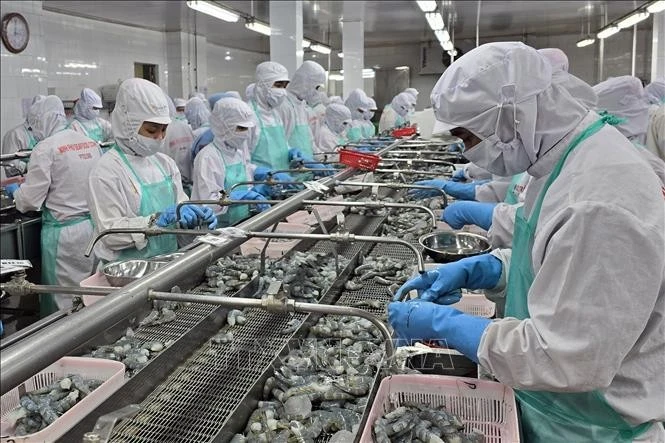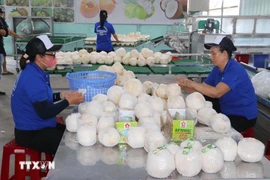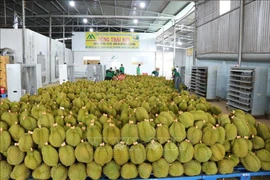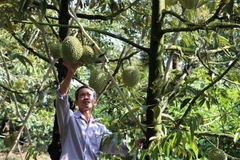Hanoi (VNA) - Vietnam's fisheries industry is projected to achieve robust growth in 2025, with exports potentially reaching 11 billion USD, following 2024's performance of roughly 10 billion USD. However, reaching this ambitious target requires efforts to overcome challenges while capitalising on emerging opportunities.
According to the Directorate of Fisheries, Vietnam will focus on improving quality and production efficiency rather than expanding shrimp and tra fish farming areas in 2025. The industry’s core strategy involves enhancing deep processing to extend value chains and reduce byproducts, thereby increasing aquatic product value. In the meantime, the sector will continue diversifying aquaculture species, comprising eel, tilapia, seaweed, and mollusks.
Developing value-added products is an important strategy for the sector to expand and maintain its foothold in the markets. Particularly, the growing trend of producing by-products from seafood raw materials presents an opportunity to increase value while adhering to circular economy principles and reducing environmental impact.
Deputy Minister of Agriculture and Rural Development Phung Duc Tien claims the sector boasts huge potential for development. For established products like shrimp, tra fish, and mollusks, the focus should be on increasing productivity, addressing antibiotic use and disease issues, and tightening quality control of shrimplets and feed to ensure sustainability.
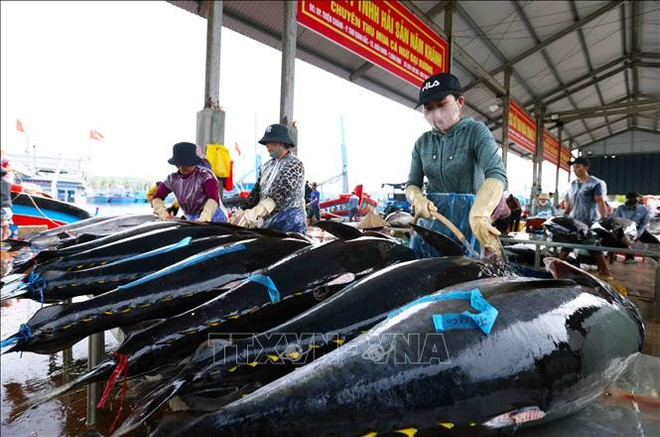
Deputy Director of the National Authority for Agro-Forestry-Fishery Quality, Processing, and Market Development Le Thanh Hoa noted that while the sector’s export turnover topped 10 billion USD last year, stricter monitoring of antibiotic residues in export shipments will be crucial in 2025.
The US remains a vital export market for Vietnamese aquatic products, particularly shrimp and tra fish. Despite facing trade defence measures, inflation, and fierce competition from major producers like India, Ecuador, and Indonesia, Vietnam's shrimp exports maintained competitiveness. Total sales reached nearly 3.9 billion USD in 2024, a 15% increase from the previous year. The success stemmed from a strategy on value-added good development and product diversification. Meanwhile, strong growth was seen in the US consumption of frozen tra fish fillets, tra fish skewers, tra fish skin snacks, and pureed tra fish balls.
A recent breakthrough came as Vietnam and the US reached a bilateral solution to end anti-dumping disputes over Vietnamese pangasius products at the World Trade Organisation (WTO).
Despite remarkable achievements, the sector faces formidable challenges, including the impact of climate change and intensifying competition from major seafood-producing nations. Rising costs of feed, fuel, and transportation could potentially reduce the competitiveness of Vietnamese seafood products in international markets, according to the industry experts./.
